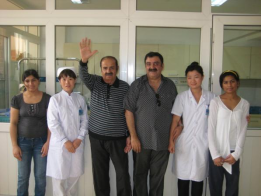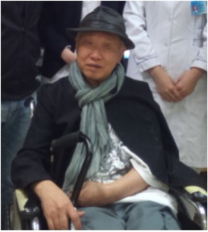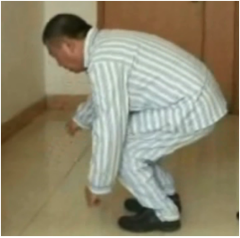
On December 22nd, 2009, the patient experienced a significant episode. After a fit of rage, he suddenly lapsed into unconsciousness and suffered from incontinence of both urine and bowel movements. Emergency medical attention was sought, and subsequent MRI examination of his head revealed local hemorrhage in the right basal ganglia area.
For over two years since then, the patient has been grappling with two major debilitating symptoms. Firstly, there has been a progressive and concerning decrease in his memory, which has had a profound impact on his daily life, affecting his ability to recall recent events, recognize familiar faces, and perform routine cognitive tasks. Secondly, he has been afflicted with a movement disorder of his limbs, making simple activities such as walking, grasping objects, or even sitting up straight a challenging ordeal.
Due to these persistent and severely disruptive symptoms, the patient was eventually admitted to our hospital. Here, he has been receiving a comprehensive treatment regimen that includes physical rehabilitation therapy aimed at improving his limb movement and nerve nutrition medication to support the recovery and function of his nervous system.
Pre-Treatment Condition (Before the First Course of Treatment)
• Mobility and Balance
The patient has achieved the ability to sit and stand independently, yet this accomplishment is marred by significant instability. During the act of sitting, he often sways, struggling to maintain an upright posture, and requires frequent readjustments to avoid toppling over. Standing independently proves equally challenging, as his legs tremble slightly, and his body constantly shifts in an attempt to find equilibrium. When it comes to ambulation, he is only capable of walking with the assistance of another person. Each step is hesitant, and he heavily relies on the support of his assistant to maintain his balance and forward momentum, making his mobility severely restricted.
• Cognitive Function
In the realm of cognitive abilities, the patient is clearly facing difficulties. His recent memory has notably deteriorated. He frequently forgets recent conversations, events that occurred just hours ago, or items he has recently placed. This memory loss not only causes confusion in his daily life but also hampers his ability to follow a normal routine. Additionally, his reaction ability has slowed down considerably. Whether it's responding to a question, reacting to a sudden noise, or making a decision, he takes a much longer time compared to his previous state.
Nocturnal Incontinence
• Incontinence of urine and bowel movements
A particularly distressing aspect of the patient's condition is the incontinence of urine and bowel movements that occurs during the night. This not only leads to discomfort and embarrassment for the patient but also disrupts their sleep quality.
First Course of Stem Cell Treatment (May 2011 )
Outcomes After the First Course of Treatment
• Limb Muscle Strength Restoration
There has been a remarkable restoration of the muscle strength in his limbs. Previously, simple tasks like grasping objects, lifting lightweight items, or even moving his limbs against gravity were arduous for him. Now, the visible increase in muscle strength allows him to perform these activities with ease. He can firmly hold a glass without the fear of dropping it, lift his arms overhead effortlessly, and walk up a flight of stairs with improved endurance.
• Thought and Reaction Ability Enhancement
His thought and reaction abilities have become significantly more sensitive compared to before. Now, he can quickly understand complex ideas, engage in lively conversations without hesitation, and respond promptly to stimuli. Whether it's solving a simple math problem, answering a phone call, or reacting to a potential hazard while walking, his enhanced cognitive speed enables him to navigate life more efficiently and interact more effectively with those around him.
• Balance Ability Improvement
The enhancement of his balance ability is strikingly evident. Before, standing on one leg, walking on an uneven surface, or making quick turns while walking were extremely challenging and often resulted in loss of balance. Now, he can maintain a stable stance even on one
Progress Summary & Future Outlook
The patient's current positive changes are highly promising signs for the future. With the significant restoration of limb muscle strength, enhanced thought and reaction abilities, and improved balance, there's great potential for further progress.


